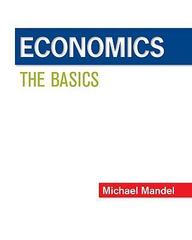a) Describe the FIVE principal active management styles.
(i) Describe the FIVE principal active management styles. [5] The trustees of a pension scheme want to evaluate two active equity managers to ascertain which manager generates the higher return per unit of risk taken. The table below sets out the managers' performance and the benchmark return over the year, as well as some summary statistics. Equity Equity Benchmark Risk manager X manager Y index free rate Return 7% p.a. 9% p.a. 6% p.a. 3% p.a. Standard Deviation 10% p.a. 15% p.a. 9% p.a. Correlation with benchmark 0.8 0.6 1.0 (ii) Calculate FOUR different risk adjusted performance measures for each equity manager. [8] (iii) Comment on the results from part (ii) in relation to each equity manager. [2] (iv) Comment on the choice of an appropriate risk-adjusted performance measure. [3] (v) State FOUR reasons why the performance of an investment portfolio is measured. [2]Consider a market in which the Capital Asset Pricing Model (CAPM) holds. (i) List the assumptions, additional to those used in modern portfolio theory, of the CAPM. [2] (ii) Prove that the market portfolio has unit beta. [2] In the same market as above, there are two assets with the following attributes. Rate of return (per annum) Variance/Covariance Matrix State Probability Asset I Asset 2 Asset I Asset 2 0.2 5.00% 11.00% Asset 1 0.00068 0.00102 2 0.3 10.00% 15.00% Asset 2 0.00102 0.00181 0.1 8.00% 12.00% 4 0.4 4.00% 5.00% Market capitalisation 40,000 60,000 (iii) Calculate the beta of each security. [3] (iv) Determine the value of the risk-free rate of interest which is consistent with the results obtained in part (iii), under the assumption that the CAPM holds.[2]Consider the following probability density function: h(x) = lex>0 (i) Set out an algorithm for sampling from (x) using the inverse transform method. [3] Now also consider the following density function, the "half-normal" distribution: V2 f(x) = ,x20 Ova Let M be the maximum of J (x) h(x) (ii) Show that M = [2] (iii) Set out an acceptance-rejection algorithm, using h(x), which generates samples from the half normal distribution f(x). [3] (iv) Determine the value of 2. for which the algorithm is the most efficient (i.e. on average require fewest samples from (x) to generate samples from /(x)). [3] (v) Show that the samples from part (iii) can be used to generate samples from the normal distribution with mean u and variance of. [3]In a three-state model where the states are: 1. Healthy 2. Sick 3. Dead let , py be the probability that a person in state i at age x is in state / at age x + f, and let wy, be the transition intensity from state / to state / at age x + 1. (i) Show from first principles that: 12 23 7 1Px = 1Px Pxe + , Px Pitt [4] Doctors have been investigating the incidence of a sickness called Wadles. This sickness is debilitating and can last for many years. It can sometimes kill the patient, but not always. Doctors have established that if a patient recovers from Wadles they are immune to further infection from this sickness. (ii) Sketch a diagram showing the states required for this sickness to be modelled as a Markov process and the possible transitions between the states. [2] During the investigation, the doctors collected data on a sample of people. The data included the total length of time each person was under investigation, and the length of time each person was observed to be afflicted with Wadles. The doctors also recorded each occasion on which a person contracted Wadles, recovered from Wadles and died, noting whether the death was caused by Wadles or another reason. (iii) Express the likelihood for the transition intensities in terms of the data collected, defining all the terms you use. [3] (iv) Derive the maximum likelihood estimator of the death rate from Wadles. [3]










